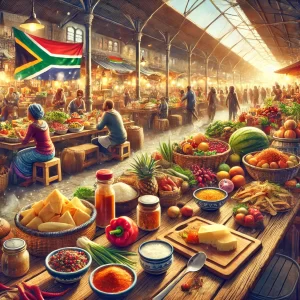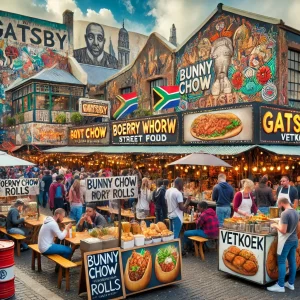Cape Malay cuisine is a unique and vibrant part of South Africa’s culinary landscape, reflecting the rich cultural heritage of the Cape Malay community. This cuisine combines influences from Malaysian, Indonesian, and East African cooking, brought to South Africa by enslaved peoples during the 17th and 18th centuries. Today, Cape Malay dishes are celebrated for their bold flavors, aromatic spices, and comforting textures. In this article, we’ll explore some of the most iconic Cape Malay dishes and their significance in South African cuisine.
The History of Cape Malay Cuisine
The Cape Malay community has its roots in the early days of the Cape Colony, when the Dutch East India Company brought enslaved people from the Indonesian archipelago, Malaysia, and East Africa to work in South Africa. These individuals brought their culinary traditions with them, which gradually fused with local ingredients and Dutch cooking methods to create what we now know as Cape Malay cuisine.
Iconic Cape Malay Dishes
- Bobotie Bobotie is perhaps the most famous Cape Malay dish. It is a savory baked dish made with spiced minced meat (usually beef or lamb), onions, and dried fruit, topped with a custard-like mixture of egg and milk. The combination of sweet and savory flavors, along with the fragrant spices, makes bobotie a beloved comfort food in South Africa.
- Samosas Cape Malay samosas are deep-fried pastries filled with spiced meat or vegetables. They are a popular snack or appetizer, known for their crispy exterior and flavorful filling. The spices used in the filling, such as cumin, coriander, and turmeric, give samosas their distinctive taste.
- Denningvleis Denningvleis is a slow-cooked lamb stew flavored with tamarind and a blend of aromatic spices. The tamarind adds a unique tangy-sweet flavor that complements the richness of the lamb. This dish is often served with rice or roti and is a staple at festive gatherings.
- Koeksisters Cape Malay koeksisters are different from the more widely known Afrikaner version. These sweet treats are spiced doughnuts, deep-fried and then soaked in a spiced syrup. They are sticky, sweet, and full of flavor, making them a favorite dessert.
- Curry Cape Malay curries are milder than their Indian counterparts but no less flavorful. They often feature a blend of spices such as cinnamon, cardamom, cloves, and ginger, with a touch of sweetness from ingredients like dried fruit or sugar. Chicken, lamb, and fish are common proteins used in these curries, which are usually served with rice or bread.
The Role of Spices in Cape Malay Cuisine
Spices are the cornerstone of Cape Malay cooking. The careful balance of spices in each dish creates complex and layered flavors that are both comforting and exciting. Common spices used in Cape Malay cuisine include:
- Turmeric: Adds a warm, earthy flavor and vibrant color.
- Cumin: Provides a nutty, peppery taste.
- Coriander: Adds a citrusy, floral note.
- Cinnamon: Brings warmth and sweetness.
- Cardamom: Offers a sweet, spicy, and slightly citrusy flavor.
- Cloves: Impart a strong, sweet, and aromatic flavor.
Modern Cape Malay Cuisine
Today, Cape Malay cuisine continues to evolve, incorporating modern cooking techniques and global influences while staying true to its roots. Many chefs are experimenting with Cape Malay flavors, creating fusion dishes that celebrate this rich culinary heritage. From fine dining restaurants to street food stalls, Cape Malay dishes are enjoyed by South Africans from all walks of life.
Conclusion
CapeMalay cuisine is a vibrant and integral part of South Africa’s culinary heritage. Its unique blend of flavors and spices reflects the history and culture of the Cape Malay community, offering a delicious and comforting taste of South Africa’s diverse food landscape. Whether you’re enjoying a classic bobotie or savoring a sweet koeksister, Cape Malay cuisine is sure to delight your taste buds.




